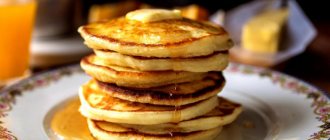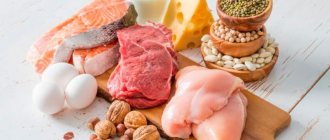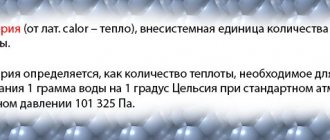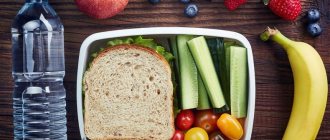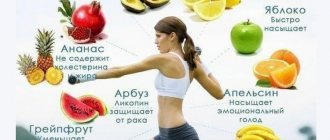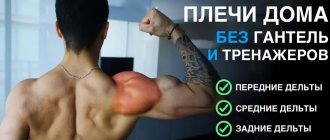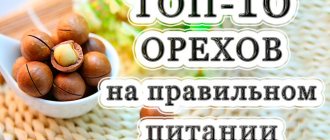Check the possibility of treatment in this area at the moment
Trying to create an ideal figure, most people constantly visit the gym, but do not pay much attention to diet and dietary habits. However, without proper nutrition, physical activity does not give the desired effect and can be completely useless. It is worth understanding that there is food that allows you to provoke fat burning and increase muscle mass. Let's look at the products in more detail.
Beef
To build muscle mass, you will definitely need lean beef. It contains a large number of substances that promote growth: iron itself, vitamins belonging to group B and, of course, zinc.
Equally important is the presence in this meat of a significant amount of proteins with a significant content of amino acids that stimulate the growth of muscle fibers. 85 grams of the product is enough to get the same amount of protein as one and a half glasses of legumes, but at the same time its calorie content is half as low, which will allow you to lose excess weight.
Diet
Product Set
What foods should make up the diet of a person building muscles:
The best foods for gaining muscle mass (TOP 10), according to sports nutritionists:
- Chicken breast.
- Eggs.
- Shrimp, oysters, mussels, squid.
- Natural yogurt, kefir, cottage cheese.
- Buckwheat.
- Beans.
- Greenery.
- Nuts.
- Dried fruits.
- Sea fish.
Many of the products on this list are quite expensive. If we add to this sports nutrition, without which the process of gaining muscle mass will be quite slow, a rather considerable amount accumulates per month, which not everyone has. However, for muscle definition, it is quite possible to create a budget diet. The following products can be its basis.
- Canned tuna
One of the cheapest sources of protein. In a can (120 g) the BJU ratio is 30/0/0. Pairs well with pasta and homemade mayonnaise.
- Ground beef
For 100 g of minced meat there is about 20 g of protein, very little fat and carbohydrates. You can add it to pasta or rice, prepare steamed dietary protein cutlets, cabbage rolls, vegetable soup with meatballs based on it.
- Ground turkey
A worthy alternative to the previous product. There is the same amount of protein, but much less carbohydrates and fat. Nutritionists call it a rich dry source of animal protein.
- Eggs
An ideal source of pure protein (about 8 g per 1 piece), and one of the cheapest. You can eat up to 8 egg whites a day, but limit the number of yolks to 3 so that cholesterol does not rise. Another advantage of this product is the variety of dishes that can be prepared from it. Protein omelettes, poached eggs, salads, eggnog, Dukan egg soup - you can come up with something new every time.
- Peanut butter
Those who are losing weight are forced to include peanut butter on the list of prohibited foods. However, it is ideal for gaining weight. Firstly, it contains a lot of plant protein to restore muscle fibers. Secondly, it is high in calories: without overeating, you will consume a sufficient amount of calories. Thirdly, it contains healthy fats.
- Whey powder
Despite the budgetary nature of the prepared diet, it is strongly recommended to buy the cheapest, but still whey powder. Believe me: it won’t make a big hole in your finances, but it will definitely take care of muscle sculpting. Allocate money for at least 1 jar per month. 50 g per day (2 scoops diluted in water) will be enough. If you want to save more, dilute 1 scoop in milk.
Another useful tip on how to organize budget meals is to buy food in bulk, this will significantly save your finances.
Meals
It is recommended to eat foods rich in carbohydrates in the first half of the day to recharge your energy for the whole day. After lunch, the emphasis is on protein.
Before going to bed, to gain muscle mass, you can eat cottage cheese, natural yogurt, a green apple, and drink kefir. The main thing is that during sleep the body does not experience stress due to the lack of additional “fuel”.
Sports nutrition
However, the diet of a person working on muscle definition should consist of not only regular food, but also sports nutrition. Best Supplements for Men:
- creatine increases anaerobic endurance;
- Protein powders (casein for example);
- Protein-carbohydrate mixtures
- BCAA (amino acids) increase protein synthesis, muscle hypertrophy, endurance, and energy.
Recommendations for women working on gaining weight:
- amino acids
- Whey Protein;
- alphein stimulates the release of adrenaline and dopamine, increases muscle power.
Sports nutrition
When including supplements in your diet, you need to know exactly when it is best to use them. For example, a bodybuilder’s sports nutrition can be distributed throughout the day as follows:
- In the morning on an empty stomach before breakfast - BCAAs.
- Half an hour before training - creatine or a protein-carbohydrate mixture.
- Within half an hour after training - BCAA or protein powder.
- Before bed - casein protein.
An approximate regimen for taking sports supplements for girls:
- Morning - caffeine.
- Before training - amino acids.
- After training - whey protein.
If you choose fairly intense physical activity to gain weight, you cannot do without sports nutrition. It is this that helps make the muscles more prominent due to the effective restoration of muscle fibers.
Lentils
High protein content is one of the benefits of lentils. Half a glass of this culture contains about nine grams of protein, the necessary potassium and phosphorus, as well as nicotinic and folic acids. The product lowers blood pressure.
This material is for informational purposes only. You can learn more about a healthy lifestyle and ways to prevent excess weight from our general practitioner. Contact him by phone 8 (495) 356 3003 at a convenient time.
Innovative Technologies LLC thanks you for reading the information.
Don't go hungry or thirsty
It is better to avoid such experiments on yourself altogether. Yes, some people are indicated for therapeutic fasting, but it must be prescribed by a competent specialist. He will select a program and tell you how to prepare the body. Everyone else needs to calculate the optimal daily amount of calories and stay within these limits. Learn to read the ingredients of foods and count calories, buy an accurate kitchen scale - this way you will know what is on your plate.
Drinking clean water regularly is necessary, and in the case of physical activity this is especially important. We are made up of 75% water - during training, it leaves the body with sweat and breathing (some also cry - some out of self-pity, some out of delight). Therefore, you need to drink before training, during it and after it - in small portions, but often. If you feel thirsty, consider that you have already missed your water intake.
What cheered up Djokovic
In a year on a gluten-free diet, Novak Djokovic lost more than five kilograms. Photo: Globallookpress
The first racket of the world, Serbian tennis player Novak Djokovic, gave up meat and gluten. The reason for this was health problems. After the examination, it turned out that Djokovic’s body does not tolerate foods containing gluten, dairy and tomatoes. Over the course of a year on a gluten-free diet, the tennis player not only lost more than five kilograms, but also felt much more energetic. This immediately affected the results - winning 43 matches in a row, 10 titles, including Wimbledon and the US Open.
“I avoid increasing insulin levels, which means giving up not only wheat, but also sugar and sugar-containing foods - chocolate, carbonated drinks,” says Djokovic. — I will say something important to Osahara, especially for people leading an active lifestyle and athletes. I use a specific form of sugar - fructose. Natural sugar found in fruits and honey, and being careful about how much fructose I eat.
The athlete admitted that during a match he would not mind snacking on dried fruits or a spoon or two of honey. And during dinner he prefers grilled meat or steamed fish.
What Djokovic advises those who want to become healthier through nutrition:
- Try a gluten-free diet even if you are not allergic to gluten.
- Avoid gluten for 14 days and see how you feel. On the 15th day, eat some bread and listen to your reaction, the tennis player shares.
- If you are lactose intolerant, avoid dairy products and get the calcium they are rich in, for example, from broccoli and fish.
Menu for an athlete for a week
Regardless of whether you have a training day or a day off, an example of a “pre-workout” meal could be a full snack no later than 16.00. The example “after training” is suitable for a late, or last meal.
Monday
- Breakfast: oatmeal with 1 banana, 1 tbsp. l. raisins, 10–20 g walnuts; low-fat milk.
- Snack: whole grain toast with turkey or chicken, low-fat cheese, 1 apple.
- Lunch: chicken breast, baked potatoes, glass of milk, 1 fruit (peach).
- Pre-workout: fruit smoothie (1 cup of fresh fruit and ½ cup of juice), cereal bar.
- After training: protein shake with milk or cottage cheese, bread.
Tuesday
- Breakfast: whole grain wheat porridge with low-fat milk and berries.
- Snack: cottage cheese with honey and walnuts.
- Lunch: beef steak, potatoes, asparagus, low-fat milk.
- Before training: fruits or juices, cottage cheese.
- Post-workout: low-fat yogurt, eggs, bread.
Wednesday
- Breakfast: 2 whole eggs and 3 whites, whole grain bread, tomato, low-fat milk.
- Snack: chicken salad, carrots, cucumber with balsamic vinegar, 1 fruit.
- Lunch: cereals (buckwheat), baked fish, vegetable salad.
- Before training: banana, glass of milk.
- After training: rice, vegetable and seafood salad.
Thursday
- Breakfast: oatmeal with milk, banana and raisins.
- Snack: chicken or turkey meat, vegetable salad, 1 fruit (grapefruit, orange).
- Lunch: rice with steamed fish, pineapple, a glass of low-fat milk.
- Before training: banana, raisins.
- After training: milk, cottage cheese (or protein).
Friday
- Breakfast: wheat cereal with banana and milk.
- Snack: salad with tuna and vegetables, 1 piece of fruit, low-fat yogurt.
- Lunch: buckwheat with chicken, vegetables.
- Before training: whole grain wheat porridge with fruit.
- After training: kefir or fermented baked milk, eggs with vegetables and herbs.
Saturday
- Breakfast: omelet of 2 whole eggs and 3 whites with vegetables, low-fat milk.
- Snack: vegetable and seafood salad, 1 fruit (pineapple).
- Lunch: boiled beef, rice, fresh vegetables.
- Pre-workout: cereal bar, fruit salad.
- After training: fish (hake, pollock) with vegetables, kefir.
Sunday
- Breakfast: oatmeal with dried fruits, nuts, milk.
- Snack: fruit, toast with low-fat cheese.
- Lunch: brown rice with steamed vegetables.
- Pre-workout: small bun with tofu cheese.
- After training: eggs, meat with fresh vegetables, kefir.
Proper nutrition during training
First of all, you don’t need to eliminate glucose from your diet completely. It must be present in a small dose in order to maintain energy for muscle gain. The secret to building muscle and losing fat at the same time is maintaining proper blood sugar levels. When you provide glucose to your body, your body burns it, using it as an energy source for high-intensity workouts. Typically, you get glucose from sugars and starches (carbohydrates) in your diet. The more carbohydrates you consume, the more glucose will be burned during your workout. This reduces the use of proteins (amino acids) from the muscles, preventing catabolism (muscle breakdown). Choose low-fat carbohydrate sources. Of course, exactly how many calories you consume is important
When you reduce your carbohydrate intake, your muscles burn glucose during exercise. This encourages your body to burn more fat, thereby saving any available glucose for those tissues that really need it (like the brain). Your body will use fat for energy. And you should also consume plenty of protein , this is required to meet the needs of the muscles, preventing their wasting.
The problem with following a carbohydrate-restricted diet to lose body fat is that you are susceptible to "muscle depression syndrome." As serious bodybuilders know, when you eat fewer carbohydrates, your muscles lose glycogen and water. This causes them to "deflate" - they become smaller, and muscle growth can come to a halt.
So, if you want to build or even just maintain muscle, you must maintain your glycogen levels. This means you need to eat enough carbohydrates .
Where does Yulia Efimova get such a figure?
Yulia has to pay for her “crimes” against her figure with additional training in the pool. Photo: rusportimage.com/Tatyana and Alexey Savchenko
But sometimes the main rule in a sports diet is the absence of rules! Amazingly, water queen Yulia Efimova doesn’t seem to be on a strict diet! She herself admits that she loves sweets, that she can even commit a “crime” against her luxurious figure - eat a burger, or even, oh horror! - chips. But of course, then you have to pay for everything in the pool with training.
On the healthy side, like a real water queen, Yulia loves seafood, vegetables and fruits, chicken, and loves avocados. And pizza and pasta are common items in the diets of many athletes.
Exercises and Workout Program for Weight Loss: Weight Exercises and Cardio Workouts
Any workout includes weight-bearing and cardio workouts for weight loss, and can be tailored to an individual plan.
Training program for 3 days
Day 1: chest/back, abs, cardio exercises
- Medium grip bench press: Warm up with 3 sets of light weights for 15, 12 and 10 reps
- Bench press with medium grip: 3 working sets – 8-10 reps
- Dumbbell flyes: 3 sets of 10 reps
- Deadlift: 3 warm-up sets of 15, 12 and 10 reps
- Deadlift: 2 working sets of 6-8 reps
- Bent-over barbell row: 3 working sets – 8-10 reps
- Wide grip lat pulldown: 3 sets – 8-10 reps
- Ab crunches: 3 sets of 35 reps
Day 2: Cardio exercise (optional)
- Run
- Jumping rope
- Bicycle or exercise bike
- Treadmill
Day 3: Legs and Abs Exercises
- Barbell Squats: Warm up with 3 sets of 15, 12 and 10 reps
- Barbell squats: 3 sets – 6-8 reps
- Leg extensions: 3 sets – 10-12 reps
- Seated leg extensions: 3 sets – 10-12 reps
- Ab crunches: 3 sets of 35 reps
Day 4: deltoids, arms, abs, cardio exercises
- Barbell Push: Warm up with 3 sets of 10 reps.
- Barbell Push: 3 sets of 10 reps
- Dumbbell lateral raises: 3 sets – 10-12 reps
- Standing French barbell press: 3 sets of 8 reps
- Triceps block extension: 3 sets of 10 reps
- EZ barbell curls: 4 sets of 10 reps
- Incline Dumbbell Raises: 2 sets of 8 reps
- Ab crunches: 4 sets of 25 reps
Day 5: Cardio exercise (optional)
- Run
- Jumping rope
- Bicycle or exercise bike
- Treadmill
Day 6: Cardio exercise (optional)
- Run
- Jumping rope
- Bicycle or exercise bike
- Treadmill
Day 7: Rest
Option 1
- Day 1: Chest/back/abs, cardio optional
- Day 2: Cardio
- Day 3: Legs/Abs
- Day 4: Cardio
- Day 5: Delts/arms/abs, cardio optional
- Day 6: Cardio
- Day 7: Rest
Training Options
Change sets of exercises every week.
Depending on your metabolism and how much fat you want to lose, you can add cardio exercises to your weight training. First weights, then cardio. Duration of cardio workout: 20-30 minutes. This way you will do cardio exercises 3 times a week.
These plans are designed for those who lead an active lifestyle. Cardio exercises can be done whenever you have free time, but the best time is in the morning, preferably on an empty stomach. If this is not possible, then do cardio exercises after dinner. Cardio exercise done in the morning or after weight training will help burn fat and give you extra energy, unlike carbohydrates.

